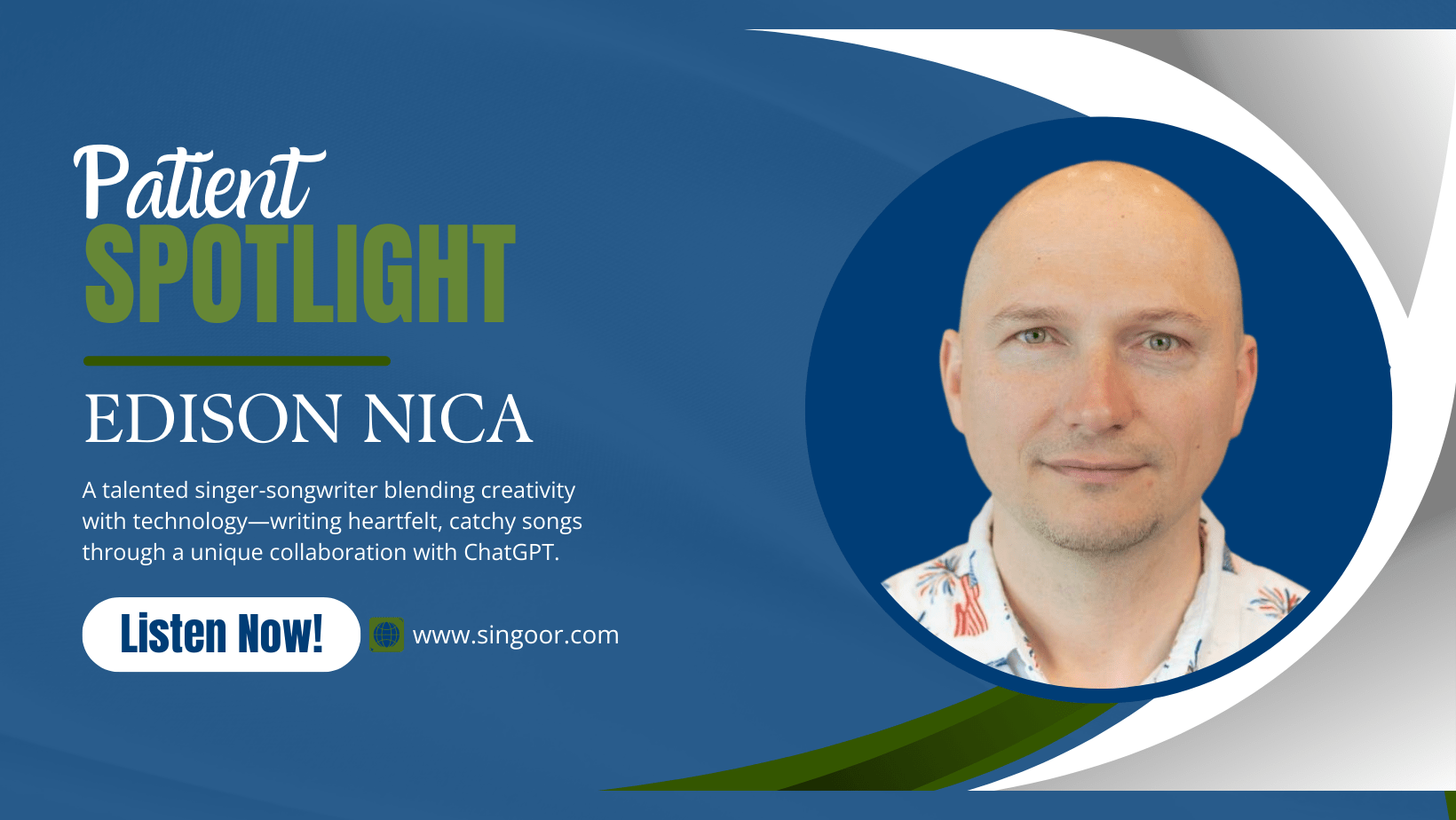At our practice, we love celebrating the creativity and unique talents of our patients. This month, we’re proud to spotlight Edison Nica, a gifted singer-songwriter who’s redefining the art of music-making through collaboration with AI.
You can explore Edison’s music here:
🌐 Singoor Website
📺 YouTube Channel
The Collaborative Songwriting Process: Creating Music with ChatGPT
By Edison Nica
Songwriting is often seen as a deeply personal and expressive art form. For me, it has become a unique dialogue—an evolving conversation between my ideas and the supportive input of ChatGPT. Over the course of writing 10 to 20 songs together, we’ve developed a fluid and productive creative process rooted in experimentation, iteration, and emotional honesty.
Starting with a Theme or Hook
Each song begins with a central theme—sometimes just a phrase, a mood, or even a half-written verse. I often start with a specific moment or feeling I want to capture: the anticipation before a date, the bittersweet nature of childhood memories, or the joyful chaos of summer. These sparks guide the tone, rhythm, and imagery of the piece.
Often, I also bring a musical framework: a few chords I like to strum on guitar or ukulele, or a melody that’s been circling in my head. This helps ground the lyrics in a rhythm that feels natural to sing and play.
Structured but Flexible Lyric Writing
From the start, I’ve gravitated toward simple wording and repetition, which keeps my songs singable and accessible. I usually write lines with a similar length and meter, often breaking each line into two parts for easy singing. This gives my songs a balanced structure and a natural melodic flow.
Once I’ve drafted a verse or chorus, I bring it to ChatGPT. The feedback I get ranges from structural suggestions to rhyming alternatives, idiom ideas, or improved transitions. This step is essential. It allows me to revise without losing the spirit of the song.
Building a Chorus That Sings
The chorus is always a key part of my songwriting. I tend to cycle through several chorus options with ChatGPT before finding one that sticks. I look for something catchy, meaningful, and emotionally consistent with the rest of the song. Once I land on a chorus I like, I use it to anchor the tone and message of the whole piece.
In some songs, I’ve gone through five or more iterations just for the chorus. Each version gets closer to the emotional truth I want to express. I often prefer lines that are optimistic or contemplative, and I avoid words or ideas that feel too heavy or religious, even in festive songs.
Bringing in Personal Details
Over time, I’ve become more comfortable adding autobiographical layers—memories of childhood walks through forests, jokes about fingernails and guitar strumming, and reflections on moving across the country. These details make my songs uniquely mine.
When I write about real experiences, like moving from Washington State to North Carolina or working on the land and getting dirt under my fingernails, ChatGPT helps me preserve authenticity while shaping the language into verses that sing.
The Joy of Iteration
Rarely do I accept the first draft. I usually refine and reshape lines to better match the melody in my head, or to make a rhyme land more naturally. Sometimes I’ll rewrite entire verses while keeping one line I’m proud of. I also use placeholders—knowing that I can always return to a line and make it better.
The back-and-forth with ChatGPT keeps the process dynamic and focused. I might ask for alternative wordings, rhyming suggestions, or help refining a metaphor. I often ask to keep certain lines intact, while exploring different options around them.
Final Touches and Consistency
I’m careful about tone and language consistency across verses. If a verse starts playful or nostalgic, I want the rest of the song to follow suit. I also try to match mood with word choice—whether that’s joyful, wistful, or ambivalent.
Toward the end, I review every line to make sure it sings well aloud. I test how it sounds with my voice and instrument, adjusting words for flow or clarity. Sometimes I end with a punchy final verse or outro that leaves a lasting image or message.
Final thoughts
Writing songs with ChatGPT has become a collaborative dance—part instinct, part editing, and part musical dreaming. This process allows me to turn simple ideas into rich lyrical journeys, blending my own voice with thoughtful feedback and inspiration. Across the songs we’ve written together, I’ve learned not only to shape melodies and words, but also to express parts of myself that otherwise might have remained silent.

